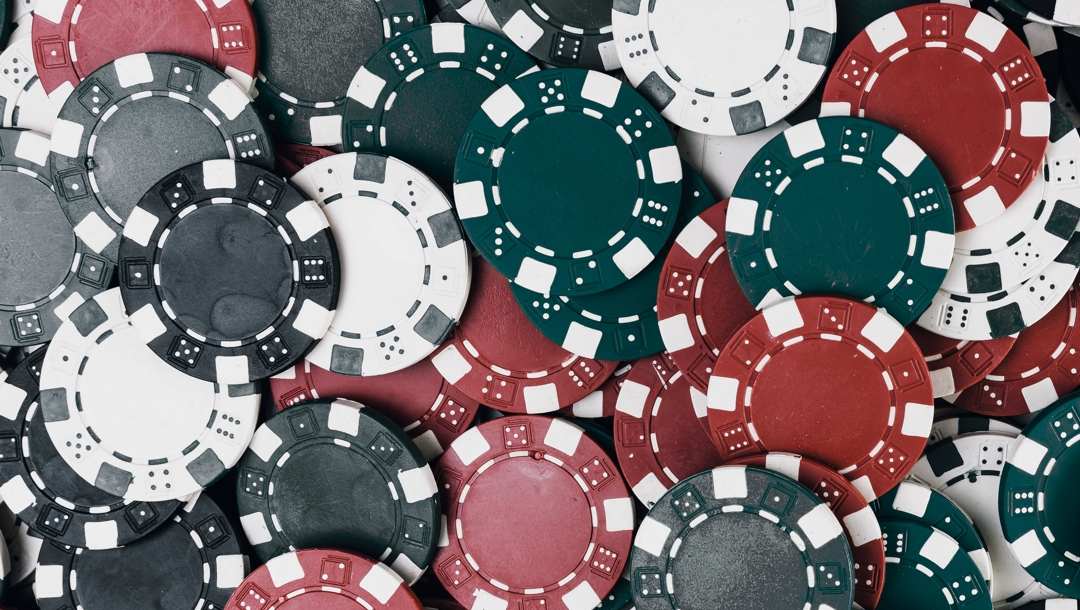
If you’ve ever tried your hand at poker, you’ll be familiar with poker chips—the small, flat, round discs used in casino table games to symbolize different values of money. Players leverage the poker chips’ value to place bets in a game or tournament.
Whoever has the best poker hand (or can convince others to fold) wins the pot of chips.
Why use chips instead of money? For starters, it’s easier to break them into smaller denominations (one $20 bill can be converted into 20 $1 chips), and it’s quicker to count each other’s stacks during the heat of the action.
Learn more about the history of chips below—how best to handle them and the different types of chips used in poker.
The History of Poker Chips
The ancestors of modern poker chips were game counters used in 17th- and 18th-century European card games like Ombre and Quadrille. French Quadrille sets featured several counters, known as jetons, fiches, and mils.
Unlike today’s poker chips, these counters were primarily differentiated by shape and color to identify ownership, rather than by monetary value.
In the early 19th century, poker players used jagged gold pieces, gold dust, coins, or makeshift “chips” crafted from ivory, bone, wood, and paper. Eventually, companies began producing clay composite poker chips during the 1880s, ushering in the modern era of poker tokens. You can explore more about the history of poker chips and how they evolved alongside the game itself.
Materials Used To Make Poker Chips
Today’s clay chips are far more durable than early versions. They are often crafted from composite materials, sometimes incorporating metal or plastic. Earthen materials like sand or chalk may also be present, but the exact composition remains a trade secret unique to each manufacturer.
Rather than painted inserts, chip edge spots are made by carving out parts of the base clay and filling them with colored clay. If you’re curious about the production secrets behind real poker chips, take a deep dive into how poker chips are made.
In the mid-1980s, ceramic poker chips gained popularity. Their advantage lies in the ability to print full-surface graphics and text on them, unlike clay chips that primarily feature inlays.
Different Types of Poker Chips

Whether you’re playing Texas Hold’em or five-card draw, poker chips are the heart of the game. Here are the most common types of poker chips you’ll encounter:
Casino Chips
Casino chips are the most familiar type. Each chip has a monetary value printed on it and is accepted as a direct substitute for cash within the casino.
Interestingly, casinos in Nevada will sometimes accept chips from competing casinos. Players can later cash out their chips at the casino’s cashier station.
If you’re starting your own home games, you might also want to know how many poker chips you need to run a smooth and organized event.
Tournament Chips
Poker tournaments often use custom tournament chips that are only valid for that specific event. These chips have no direct cash value. Instead, players receive a starting stack based on the tournament buy-in.
For example, a $100 buy-in tournament may provide each participant with 10,000 tournament chips. Managing your stack properly throughout the tournament is critical for success.
Colour-Based Poker Chips
Poker chip colors help players and dealers quickly recognize different denominations during a game. This system is used across both live dealer casino games and online casino games.
The most common color-value assignments include:
- White: 1
- Red: 5
- Green: 25
- Blue: 50
- Black: 100
- Purple: 1,000
- Yellow: 5,000
Having standardized color schemes makes gameplay faster and helps prevent errors at the table.
Tips for Handling Poker Chips

Poker chips are designed for functionality and efficiency, but how you manage them at the table also matters. Here are some essential dos and don’ts:
- Keep them in organized stacks: This makes chip counting and bankroll management easier.
- Place chips behind the betting line: Avoid accidental bets.
- Don’t mix denominations within stacks: Prevent confusion during hands.
- Don’t splash the pot: Place your bets neatly to avoid misunderstanding.
- Avoid fiddling: Holding chips too tightly or playing with them can become an obvious tell that skilled opponents will notice.
Speaking of tells, if you want to sharpen your poker instincts, learning how to tell when someone’s bluffing in Texas Hold’em could give you an edge at the tables.
Different Chip Tricks Used at the Poker Table
Many players love showing off their chip-handling skills at the table. One of the most iconic chip tricks is riffling — placing two stacks side by side and weaving them together using just your fingers.
Other popular tricks include chip twirls and single-chip spins, but be careful, as they can also reveal nervousness or tension. Mastering a few tricks can add a touch of flair to your poker persona; just make sure they don’t become tells.
Keep Chipping Away at Online Poker With BetMGM
Whether you’re riffling chips at a live table or managing virtual stacks online, poker chips are an essential part of the game. Online poker rooms use virtual poker chips to deliver an authentic casino experience while eliminating manual counting errors.
Register with BetMGM today to play poker online and enjoy smooth gameplay from the comfort of your home. Plus, you can stretch your bankroll further with a rewarding online poker welcome bonus when you join. Whether you’re a casual player or a professional aiming for maximum profit, BetMGM Poker is the ultimate destination to sharpen your skills and have fun.
Poker chips are tokens used in casinos that symbolize different values of money. Read this guide on the different types of chips and how to handle them.


